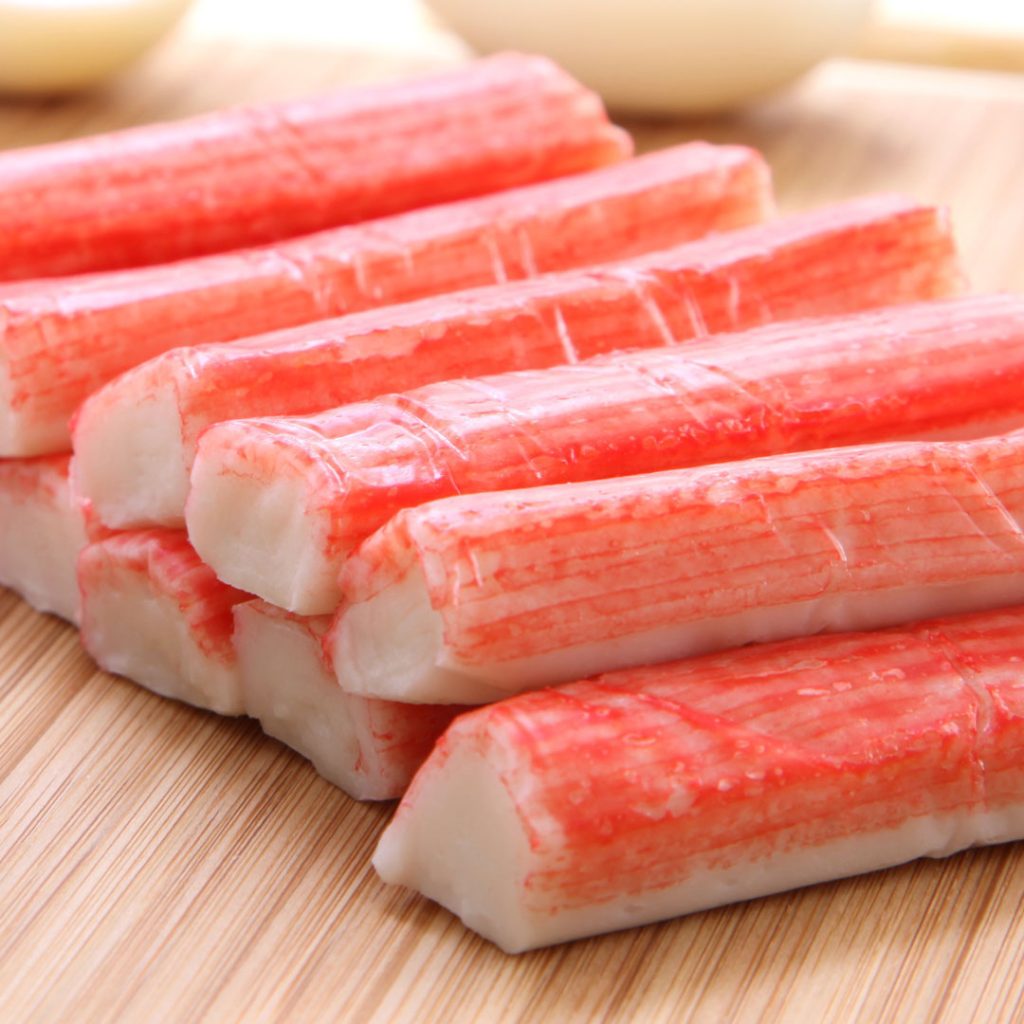You’ve seen it tucked inside sushi rolls, topping seafood salads, or served in crab dip — that pink-and-white seafood staple known as imitation crab. It looks like crab, tastes a little like crab, and it’s marketed as a crab alternative. But here’s the truth: there’s almost no real crab involved.
In fact, imitation crab might be one of the most misleadingly named foods on the market. While it’s tasty, affordable, and incredibly popular, what you’re really eating when you bite into imitation crab is something far different than the delicate shellfish you imagine.
If you’ve ever wondered what’s actually inside that glossy pink stick, buckle up — the reality might just surprise you.
What Is Imitation Crab, Really?

Imitation crab, also known as surimi, is a processed seafood product designed to mimic the taste, texture, and appearance of real crab meat — but without the hefty price tag.
The primary ingredient? White fish, most commonly Alaska pollock. This mild-flavored fish is pulverized into a smooth paste called surimi, which is then combined with a cocktail of other ingredients to create that familiar crabstick look and flavor.
While it may visually resemble snow crab or king crab meat, the connection stops there. Essentially, you’re eating a fish-based processed food flavored and dyed to resemble crab — a bit like seafood cosplay.
What Else Is in Imitation Crab?
Beyond pollock paste, imitation crab contains a laundry list of additives and binders to achieve the texture, shelf life, and flavor consumers expect:
- Starch (often wheat or corn-based) to thicken and bind
- Egg whites to stabilize the mixture
- Vegetable oils for richness
- Sugar for a slight sweetness
- Salt for flavor and preservation
- Artificial flavorings to mimic the natural briny taste of crab
- Colorings (like carmine or paprika extract) to create that signature pink hue
In other words, imitation crab is a heavily engineered food — closer to a hot dog than a piece of fresh seafood.
Why People Still Love It
Despite its processed nature, imitation crab remains wildly popular — and it’s not hard to see why:
- Affordability: Real crab is expensive, while imitation crab offers a seafood-like experience at a fraction of the price.
- Convenience: It’s fully cooked and ready to eat straight from the package, perfect for quick meals and snacks.
- Mild Flavor: For those who find real crab too briny or strong, imitation crab offers a gentler, sweeter seafood flavor.
- Versatility: Imitation crab is used in everything from California rolls to seafood salads, crab cakes, pasta dishes, and even crab dips.
For many people, the convenience and taste outweigh the concern over how “real” it actually is.
The Nutritional Breakdown
Imitation crab isn’t just different from real crab in taste — it’s also different nutritionally. Compared to real crab meat:
- It’s lower in protein: Real crab delivers about twice as much protein per serving.
- It’s higher in carbs: Thanks to the added starches and sugars.
- It can contain additives that some people try to avoid, like MSG, preservatives, and artificial flavors.
That doesn’t mean imitation crab is inherently bad — but it’s worth knowing what you’re putting on your plate, especially if you’re watching your intake of processed foods.
How to Choose Better Imitation Crab
If you enjoy imitation crab but want to make smarter choices, here are a few tips:
- Check the ingredient list: Look for brands with fewer additives and artificial flavors.
- Opt for refrigerated versions: These often have a fresher taste and fewer preservatives than shelf-stable ones.
- Balance your plate: Pair imitation crab with lots of fresh veggies and healthy fats to create a more well-rounded meal.
And of course, if your budget allows, treating yourself to real crab now and then will give you a much richer flavor — and a lot more protein.
Leave a comment